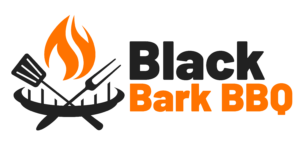So, picture this:
You’re in a supermarket, picking up bits and pieces for your next cookout. You’ve got some burger buns, some great sauces, and you’ve picked up some charcoal or smoke pellets for your grill.
Now, you’re on the meat aisle, or at the butcher’s section, picking out your meats that will become the centerpiece for your barbecue. You’ve got some chicken and turkey thighs, you have some pork medallions.
Now you’re searching for the centerpiece to any good grill out.
The beef!
So, you’ve found a few beef briskets, and are ready to take them to the checkout. But as you pick them up, you realize that they are labeled with the term ‘choice’.

Not only that, but just next to it, you have also seen a brisket that has been labeled ‘prime’.
So, what’s that all about? What is so different about these two types of brisket that butchers and stores feel the need to label them this way?
Is it a quality issue? Is there something else going on?
Well, that is what we’ll be discussing today. In this guide, we will be going to go over the differences between prime and choice beef briskets, and how to recognize which one you should buy.
We’ll also discuss why butchers and supermarkets feel the need to put labels on their products like this, and whether or not those labels matter for your amazing grill out!
What Is Brisket?
This might seem like an unnecessary section. Everyone knows what a brisket is, right?
But you’ll be surprised how many first-time cooks of this cut of meat simply don’t know the first thing about it. There’s nothing wrong with that of course.
We’ve all been beginners at some point!
Still, it pays to know exactly what a beef brisket is before we go on to describe its different grades of it. So let’s quickly cover what a brisket is first.
So, beef brisket is simply the muscle that runs from the top of the rib cage down to the bottom of the spine. It can also be referred to as a flat iron steak.
This is because it resembles a large flattened iron (or knife) shape when sliced horizontally.
It’s common to think of the brisket being divided into smaller cuts called ‘ribs’ and ‘flanken’ slices, but this isn’t true. Ribs come from the larger end of the brisket, while flanken comes from the thinner edge of it.
Both of these cuts make delicious roasts, ribs especially, but as a whole, it’s often used as part of a full grilling event.
The most popular use of beef brisket though is probably the main ingredient in barbecues. It makes sense then that the best ones are usually the priciest ones, but what does this mean?
And why do butchers and grocery stores care about labeling things this way anyway? Well, that’s what we’ll get on to next…
Beef Grades
As the cows or bulls that beef, and by extension, brisket, comes from ages and goes through life, how the muscles and fat in its body behave and taste change as well, depending on both the age of the cow before it was butchered into beef, as well as its diet and living conditions.
To help both butchers and buyers determine the type and quality of the cow that the beef comes from, briskets are often labeled with a specific grade to them, to indicate the quality of meat that the beef comes from.
And that’s where
Prime Brisket
So, now we’ve cleared up the obvious information, let’s start with a quick discussion on what exactly a prime beef brisket is.
When it comes to the general level of quality you can expect from your cut, prime beef is the highest quality grade of beef that you can find in a butcher’s or supermarket.
Prime beef is more expensive than other grades because it requires more time and effort to produce, as it requires the young bull, or steer, in question to have been fattened just the right amount before it is turned a beautiful cut of beef for your eating pleasure.
Prime beef is typically the type of beef that is used for making steaks as well, and the term ‘prime’ can be given to any cut of beef from a steer that was above a specific level of quality.
A prime cut is a very lean piece of beef, with just the right amount of marbling being found in a prime cut. But because it is a type of meat that only comes from the highest grade of bull, it isn’t always easy to find.
If you’re looking at it from a purely statistical standpoint, then the amount of beef that is labeled as prime beef is less than 2% of all beef cuts!
Some restaurants won’t serve it, because it is too expensive to have a regular supply, with only the most high-end restaurant or hotel establishment being able to afford such a luxury.
But if you can get it and prepare it correctly, it is a delightful taste sensation that melts in the mouth unlike pretty much anything else.
Choice Brisket
So, where does this leave ‘choice’, the other grade of beef brisket that we are talking about?
Well, generally speaking, choice beef is still a good cut of beef, although not quite so lean as a prime cut, amongst a few other details.
For one thing, Choice cuts tend to have a lot less marbling in them, the intramuscular fat that gives some cuts of beef their trademark white or light-pink lines between the meat, making them a lot leaner than prime cuts, meaning the choice cuts are generally less fatty than the prime cuts.
In some cases, this means that the flavor that you get from an excellent cut of prime brisket will not be strong or noticeable in a choice cut.
Still, that doesn’t mean that a choice cut isn’t an excellently tasting piece of beef to eat. It simply means that preparation will be key.
The choice cuts are less fatty than the prime cuts. Briskets that are labeled as Choice will still turn out flavorful if cooked properly.
You should cook your choice brisket at 225-275 degrees.
Prime Vs Choice Brisket: Which Is Better?

So, now that we have established what choice and prime cuts of beef are, it is time to compare the two.
Whilst prime being considered a higher grade of beef might suggest that it is better than choice, this isn’t necessarily the case.
As the beef grading system that the US Department of Agriculture uses is more for the beef producer’s benefit, rather than for consumers, it isn’t as important for dictating overall quality. When it comes to choosing which one to cook, there are pros and cons to cooking either of these.
Generally speaking, prime brisket has the benefit of having the right balance of muscle to fat over choice that makes it more tender, thanks to the fat-to-muscle composition than choice, as well as being a little juicier (again, due to the same reason).
So when it comes to eating prime brisket, many folks will say that it tastes best on its own, without any additions like sauce, rubs, or toppings.
However, this doesn’t make prime the better cut over choice in every scenario. When it comes to grilling or smoking, the actual taste and flavor are pretty unnoticeable for most people, making the supposed higher quality somewhat of a redundancy.
This is especially the case when discussing pricing for these two cuts. Choice brisket is often cheaper than prime, which also means that you can get a larger cut of it for the same amount of price.
Remember, just because prime is higher quality beef, doesn’t mean that it can’t be ruined if prepared poorly and ruined. By the same token, a cheaper, supposedly low-quality cut, can be made to taste amazing when given a little time and effort.
Overall, if you’re planning for your grill out, you may want to consider choice over prime, unless you know exactly how best to prepare prime on a grill.
Other Grades Of Beef
Besides choice and prime, there are other grades of meat available to purchase out there.
Select
A slightly lower grade than both prime and choice, select is leaner than both of these cuts, with very little marbling. It is still very possible to get a delicious taste from select grade beef, but it should be watched whilst being cooked.
Without the fatty tissue from the marbling effect, it is very easy to burn and dry up a select beef brisket. This is why, when preparing a select brisket, it is often marinated for several hours or overnight before cooking, to help make the meat more tender when it is eventually cooked.
Angus
Aberdeen Angus cows are a tough breed of cattle originally bred in Scotland. They are known for being very strong and having a healthy appetite.
Angus beef is usually considered high-quality beef. Male Angus cattle can weigh up to 850 pounds.
Females can weigh up to 550 pounds. Their meat is highly prized because of its delicious flavor.
It is also generally very tender, but there is no difference between Angus and Black Angus beef. Buyers should be aware that the price of beef depends on how much fat the animal has.
If the cow is fed properly, then the meat is tender. If the cow isn’t fed properly, then the beef could be tough.
The Angus cattle are very popular because they are good-tasting and high in protein, but it should be noted that being from a quality breed doesn’t always guarantee quality meat from its wither.
Conclusion
So, we’ve discussed a few of the differences between choice and prime brisket, with a few other mentions of other grades of beef too. Now take all of that into account, and decide whether prime is worth buying over choice.
A little preparation goes a long way after all!
- Porterhouse Vs. Ribeye - May 16, 2022
- How Long To Smoke A Brisket Per Pound – Explained - May 16, 2022
- What Is A Tomahawk Steak? - May 16, 2022








